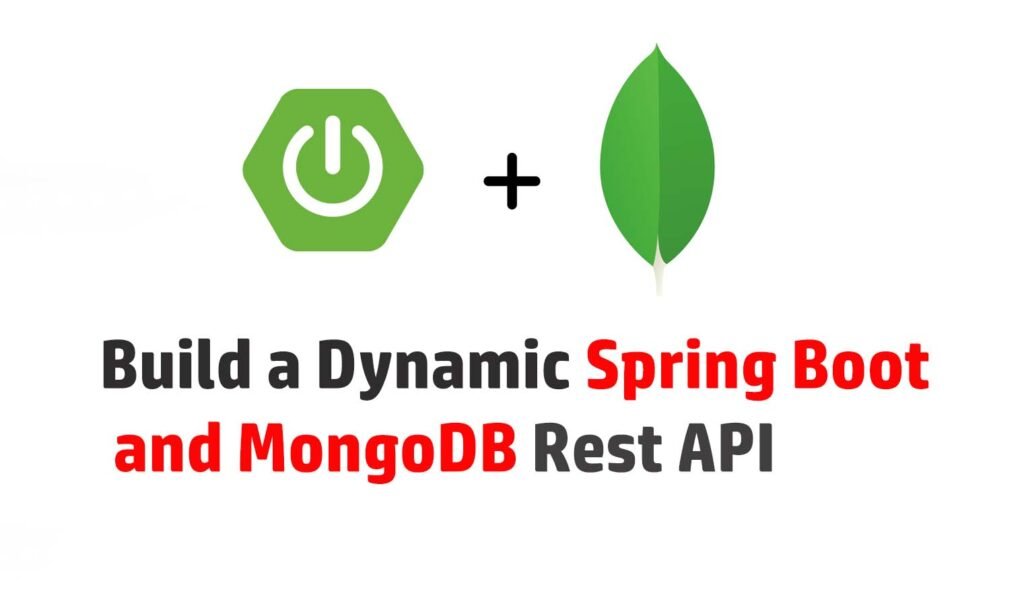Table of Contents
Introduction of Spring Boot and MongoDB Rest API
We’ll create a Spring Boot and MongoDB Rest API in this tutorial to handle employee data kept in a MongoDB database. Establishing a project, building data models, carrying out CRUD (Create, Read, Update, Delete) actions, and testing your API endpoints are among the skills you’ll acquire.
Required conditions:
-> JDK, or Java Development Kit, version 17 or higher
-> An IDE such as VS Code or IntelliJ IDEA
-> A fundamental knowledge of REST APIs, Spring Boot, and locally installed and operational MongoDB- ClickHere
1. Project Setup
- Spring Initializr: Visit SpringInitiazr and create a project with these dependencies: Spring Web, Spring Data MongoDB, SpringBoot DevTools
- IDE Import: Import the generated project into your IDE.
2. Define the Employee Model
Create Employee.java:
package com.example.tech.model;
//Spring Boot and MongoDB Rest API
import org.springframework.data.annotation.Id;
import org.springframework.data.mongodb.core.mapping.Document;
@Document(collection = "employees")
public class Employee {
@Id
private String id;
private String name;
private String designation;
public String getId() {
return id;
}
public void setId(String id) {
this.id = id;
}
public String getName() {
return name;
}
public void setName(String name) {
this.name = name;
}
public String getDesignation() {
return designation;
}
public void setDesignation(String designation) {
this.designation = designation;
}
}
3. Create The Repository
Create EmployeeRepository.java
package com.example.tech.repository;
// Spring Boot and MongoDB Rest API
import org.springframework.data.mongodb.repository.MongoRepository;
import org.springframework.stereotype.Repository;
import com.example.tech.model.Employee;
@Repository
public interface EmployeeRepository extends MongoRepository<Employee, String> {
}
4. Create the Service Layer
Create EmployeeService.java (Interface)
package com.example.tech.service;
// Spring Boot and MongoDB Rest API
import java.util.List;
import java.util.Optional;
import org.springframework.stereotype.Service;
import com.example.tech.model.Employee;
@Service
public interface EmployeeService {
public List<Employee> getAllEmployees();
public Optional<Employee> getEmployeeById(String id);
public Employee createEmployee(Employee employee);
public Employee updateEmployee(String id, Employee employee);
public void deleteEmployee(String id);
}
Create EmployeeServiceImpl.java (implementation)
package com.example.tech.service;
// Spring Boot and MongoDB Rest API
import org.springframework.beans.factory.annotation.Autowired;
import org.springframework.stereotype.Service;
import com.example.tech.model.Employee;
import com.example.tech.repository.EmployeeRepository;
import java.util.List;
import java.util.Optional;
@Service
public class EmployeeServiceImpl implements EmployeeService {
@Autowired(required=true)
private EmployeeRepository employeeRepository;
public List<Employee> getAllEmployees() {
return employeeRepository.findAll();
}
public Optional<Employee> getEmployeeById(String id) {
return employeeRepository.findById(id);
}
public Employee createEmployee(Employee employee) {
return employeeRepository.save(employee);
}
public Employee updateEmployee(String id, Employee employee) {
if (employeeRepository.existsById(id)) {
employee.setId(id);
return employeeRepository.save(employee);
}
return null;
}
public void deleteEmployee(String id) {
employeeRepository.deleteById(id);
}
}
5. Create The Rest Controller
Create EmployeeController.java
package com.example.tech.controller;
// Spring Boot and MongoDB Rest API
import org.springframework.beans.factory.annotation.Autowired;
import org.springframework.http.HttpStatus;
import org.springframework.http.ResponseEntity;
import org.springframework.web.bind.annotation.*;
import com.example.tech.model.Employee;
import com.example.tech.service.EmployeeService;
import java.util.List;
import java.util.Optional;
@RestController
@RequestMapping("/employees")
public class EmployeeController {
@Autowired(required = true)
private EmployeeService employeeService;
@GetMapping("/getAll")
public List<Employee> getAllEmployees() {
return employeeService.getAllEmployees();
}
@GetMapping("/{id}")
public ResponseEntity<Employee> getEmployeeById(@PathVariable String id) {
Optional<Employee> employee = employeeService.getEmployeeById(id);
return employee.map(value -> new ResponseEntity<>(value, HttpStatus.OK))
.orElseGet(() -> new ResponseEntity<>(HttpStatus.NOT_FOUND));
}
@PostMapping("/saveEmployee")
public ResponseEntity<Employee> createEmployee(@RequestBody Employee employee) {
Employee createdEmployee = employeeService.createEmployee(employee);
return new ResponseEntity<>(createdEmployee, HttpStatus.CREATED);
}
@PutMapping("/{id}")
public ResponseEntity<Employee> updateEmployee(@PathVariable String id, @RequestBody Employee employee) {
Employee updatedEmployee = employeeService.updateEmployee(id, employee);
if (updatedEmployee != null) {
return new ResponseEntity<>(updatedEmployee, HttpStatus.OK);
} else {
return new ResponseEntity<>(HttpStatus.NOT_FOUND);
}
}
@DeleteMapping("/{id}")
public ResponseEntity<Void> deleteEmployee(@PathVariable String id) {
employeeService.deleteEmployee(id);
return new ResponseEntity<>(HttpStatus.NO_CONTENT);
}
}
6. Application Configuration
Create/Update Application.properties
// Spring Boot and MongoDB Rest API
spring.data.mongodb.host=localhost
spring.data.mongodb.port=27017
spring.data.mongodb.database=employeeDatabase
server.port=9000
7.Start the Application
Run your Springboot Application from your IDEA.
Testing with Postman (or similar tool): Spring Boot and MongoDB Rest API URL’s
- GET All Employees:
GET http://localhost:9000/employees/getAll - GET Employee by ID:
GET http://localhost:9000/employees/{id}(Replace{id}with an actual ID) - POST Create Employee:
POST http://localhost:9000/employees/saveEmployeeContent-Type: application/json
{
"name": "Alice Johnson",
"designation": "Software Engineer"
}- PUT Update Employee (Similar to the above, with JSON in the body)
- DELETE Employee
DELETE http://localhost:9000/employees/{id}
Explore More Topics:
-> Master Spring Data JPA Custom Query Example: A Simple Guide
-> Spring Boot REST API CRUD Example With MySQL Database
-> Login Registration and Forgot Password Form in HTML CSS
-> Step-by-Step Guide: Setting up Jenkins on Amazon EC2 Instance with Ubuntu
-> Creating a Responsive Login and Signup Form in React.js
